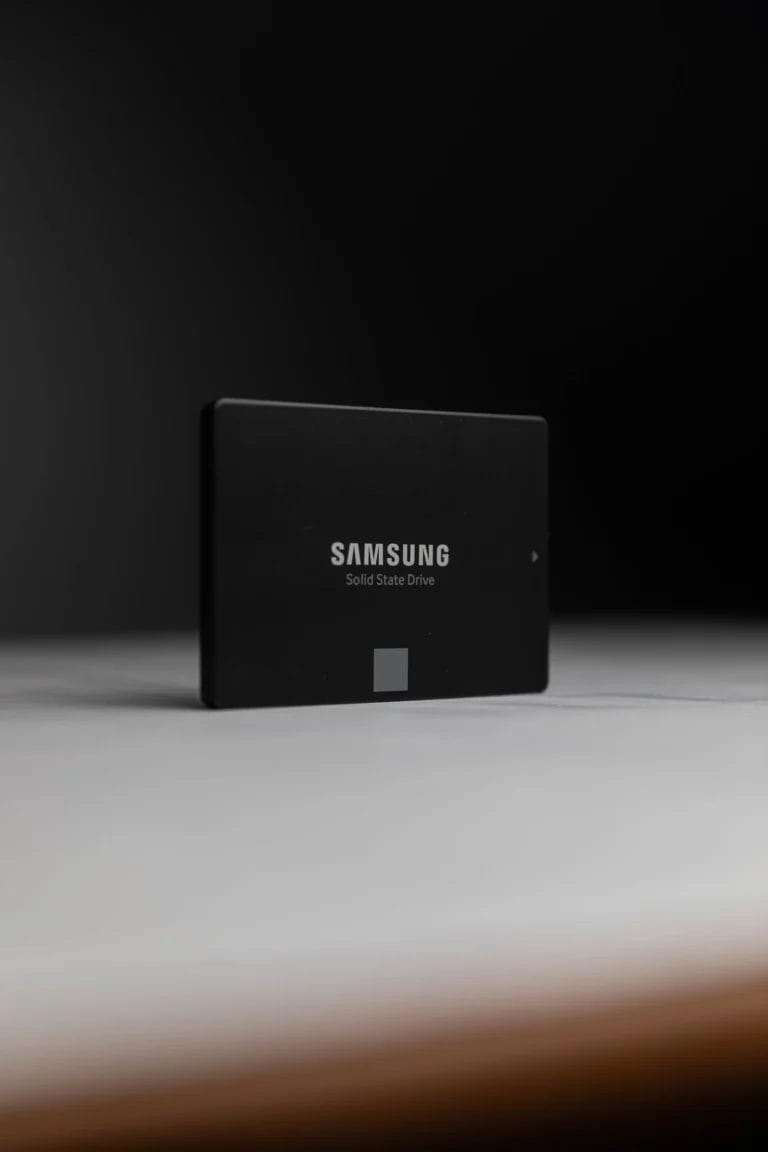The Neuromarketing Method of Marketing Research Uses: Revolutionizing Product Marketing

Envision the power of comprehending your customers’ mental journey when they encounter your product, advert, or service. Neuromarketing provides a compelling perspective for this concept. This trailblazing field blends neuroscience and marketing research to gain deep insights into consumer behaviors. This method arms businesses with the capability to develop more personalized and successful marketing tactics.
By studying how various stimuli impact brainwaves, eye movements, and skin responses, marketers have begun to outclass traditional techniques, leading to a profound understanding of human behavior. Intrigued? Let’s delve deeper into how neuromarketing is revolutionizing the industry.
Understanding Neuromarketing

Neuromarketing examines how our brain reacts to advertisements. It uses tools such as eye-tracking and brainwave monitoring to understand better what makes consumers choose one product over another. Its primary goal is to guide our purchasing decisions by focusing on the physiological signals indicating what we like or want the most.
This revolutionary method has gone beyond traditional marketing research approaches, allowing for more comprehensive user experience testing and more efficient design evaluations. For instance, neuromarketing can reveal how images in advertisements impact our brains.
Thus, neuromarketing has created a shift towards a more profound understanding of human behavior. Unlike conventional methods, where people are merely asked about their opinions, neuromarketing involves learning from subtle signals deep within the mind as customers browse and choose products.
The Purpose of Neuromarketing in Marketing Research

Neuromarketing uncovers what a customer desires by employing tools like brainwave monitors, eye trackers, and skin tests. It also assesses whether a product design is successful.
It improves user experience testing and enhances marketing strategies. By studying the responses of consumers’ brains to advertisements and brand messages, neuromarketing helps marketers understand why customers have specific preferences. Compared to conventional methods, such as surveys, neuromarketing offers a more in-depth understanding of human behavior.
One significant advantage of neuromarketing is that it provides honest data since customers can’t fabricate their subconscious responses during testing.
Benefits of Using Neuromarketing in Market Research
Neuromarketing provides novel insights into customer understanding. Here are some of the benefits it offers:
- Uncovers true feelings: Neuromarketing uses brain activity and heart rate data to reveal how customers genuinely feel about a product or brand.
- Detects instant reactions: Short-lived feelings that traditional market research might overlook can be detected through neuromarketing.
- Identifies attention-grabbing elements: Eye-tracking can reveal what part of an ad or a webpage draws customer’s attention, aiding designers in their work.
- Obtains honest feedback: Neuromarketing goes beyond asking questions and looks at physiological responses to uncover truthful feedback.
- Saves resources: Neuromarketing can be a cost-effective way to gather deep insights into customers’ preferences.
- Discovers hidden preferences: Neuromarketing can dig deeper to identify the hidden reasons behind customer choices.
- Maps the mind’s journey: Viewing precisely how the brain reacts during decision-making helps marketers create better experiences for users.
- Enhances product design testing: By acknowledging precise responses, marketers can design products that impact customers in ways they might not be aware of.
- Boosts effective marketing strategies: With a clearer view of human behavior, strategies can be planned based on solid data.
- Simplifies user experience testing: Neuromarketing tools can help optimize websites for a potent user experience by understanding customer behavior better.
- Assists in rebranding campaigns: Brands looking for a reinvention can hugely benefit from neuromarketing as it provides actionable inputs based on consumers’ neural responses to marketing stimuli.
Despite its many advantages, neuromarketing has faced criticisms over various issues, including privacy concerns, the cost of brain scans, and doubts about data’s trustworthiness, which we will discuss next.
Critiques of Neuromarketing

Neuromarketing has indeed faced its fair share of criticism. Some argue it manipulates people’s minds negatively and label it pseudoscience. Critics argue that traditional market research techniques perform equally well, if not better.
Others worry about the invasiveness of neuromarketing, seeing it as a threat to personal space and privacy. There’s also concern about the high cost associated with using brain scans for marketing purposes.
Another point of contention is the trustworthiness of brain data, especially when it is used for selling goods or services. Additionally, critics point out the lack of regulations on the correct use of neuromarketing tools, which adds to the existing apprehensions.
Critics also argue that over-reliance on brain signals might oversimplify consumers’ complex decision-making processes when it comes to purchasing products.
Neuromarketing Tools Used in Marketing Research
Neuromarketing employs a variety of tools to extract valuable information about consumer behavior and decision-making processes. These include Electroencephalography (EEG), Functional Magnetic Resonance Imaging (fMRI), Facial Encoding, Eye Tracking, and Electrodermal Activity (EDA).
EEG measures the brain’s electrical activity and identifies patterns of neural responses related to distinct marketing stimuli. Similarly, fMRI employs magnetic fields to measure brain blood flow, allowing researchers to pinpoint brain areas active during certain cognitive processes.
Facial encoding, as the name suggests, analyzes facial expressions to uncover emotional reactions towards advertisements or products, offering valuable data for marketing strategies.
Eye-tracking technology tracks eye movements and measures visual attention. This information helps marketers optimize product design and placement for maximum impact.
Finally, EDA measures changes in sweat gland activity as an indicator of emotional arousal. This tool provides insights into the subconscious reactions and preferences of consumers.
Translating Neuromarketing Data into Actionable Strategies
Neuromarketing data can offer valuable insights that enhance marketing strategies and campaigns. Here are some ways to translate neuromarketing data into actionable strategies:
- Optimizing ad content: By analyzing neural responses, eye movements, and emotional reactions, marketers can identify elements within an advertisement that capture attention and invoke positive emotions. This information can be used to refine the ad’s content to make it more engaging and persuasive.
- Improving product packaging: Neuromarketing techniques like facial coding can reveal consumers’ subconscious emotional responses to different packaging designs. Marketers can use these insights to create packaging that evokes positive emotions and communicates the desired brand image effectively.
- Enhancing brand messaging: Neuromarketing research can discern how different messages resonate with consumers at a subconscious level. By understanding which aspects of a message trigger positive emotional responses or cognitive engagement, marketers can craft more effective brand communications.
- Personalizing user experience: Neuromarketing research can identify individual preferences by analyzing brain activity and physiological responses, enabling a tailored user experience. This can involve optimizing website layouts, product recommendations, and personalized marketing messages based on each user’s neural responses.
- Influencing consumer decision-making: Neuromarketing data can shed light on the cognitive processes underlying consumer decision-making. Marketers can use this knowledge to influence customers towards desired choices through persuasive messaging, product positioning, and pricing strategies.
- Testing new product features: By measuring brain activity during exposure to prototypes or concepts, neuromarketing research can assess consumer preferences for specific product features. This guides product development by identifying which features have the greatest appeal or generate the strongest neural responses.
- Tracking advertising effectiveness in real-time: Using neuroimaging techniques such as EEG or fMRI, marketers can measure brain activity while individuals are exposed to advertisements in real-time settings. This allows them to gauge immediate reactions and adjust their campaigns accordingly.
Why Neuromarketing is Rising in Popularity
Neuromarketing’s popularity is soaring due to several reasons. First and foremost, recent advancements in neuroscience technology and methodology have simplified the process of studying the human brain and its responses to marketing stimuli.
This has allowed for a deeper understanding of the subconscious factors influencing consumer behavior. Secondly, businesses are increasingly aware that traditional marketing research techniques may not accurately reflect customer preferences and decision-making processes. Neuromarketing provides a more precise method to gain insights into consumer behavior by focusing on brain activity related to emotions, attention, and decision-making.
Also, as businesses strive to stand out in today’s competitive marketplace, neuromarketing strategies are an advantageous tool for better understanding their target audience and creating more effective, personalized marketing campaigns. Thus, the capability of neuromarketing to offer unique insights into consumer behavior and assist in successful marketing strategies is driving its increasing popularity.
Conclusion
In conclusion, neuromarketing is an innovative and potent method of marketing research, allowing marketers to delve into consumer behavior like never before. By using tools such as brainwave monitoring, eye-tracking, and skin response analysis, it allows marketers a glimpse into the subconscious motivations and preferences of their target audience.
With its ability to bypass biases and provide precise data, neuromarketing offers a unique advantage in developing effective marketing strategies. As the need for standout marketing grows in an ever-competitive marketing landscape, exploring and adopting neuromarketing techniques have proved to be fundamental in gaining a strategic upper hand and driving successful marketing campaigns.
Real-World Examples of Neuromarketing
Many businesses have successfully incorporated neuromarketing techniques to understand consumer behavior and drive effective marketing campaigns. Here are a few real-world examples:
- McDonald’s – McDonald’s uses neuromarketing to design their menu boards. They strategically place certain items and use vivid imagery to tap into customers’ subconscious desires, thus driving more sales.
- Coca-Cola – Coca-Cola utilized EEG technology to monitor consumers’ brain activity when viewing different ads. They discovered that an advert featuring a football player triggered stronger emotional responses, which subsequently led to a higher intent to purchase.
- Audi – The car company Audi utilized eye-tracking technology to understand how consumers visually engage with their website. This information helped them optimize the site’s layout and design, creating a more user-friendly, engaging online experience.
- Nestlé – Nestlé used facial coding to test consumer reactions to different packaging designs. By analyzing facial expressions, Nestlé was able to identify which design was most appealing and make data-driven decisions for product development.
- Walmart – Walmart, a well-known supermarket, implemented neuromarketing techniques by tracking shoppers’ movements using heat maps. Analyzing this data helps enhance store layouts, maximize customer engagement, and encourage impulse purchases.
- Samsung – Samsung employed functional magnetic resonance imaging (fMRI) technology to investigate consumers’ brain responses to different phone features. The findings helped them refine both product design and marketing strategy based on users’ subconscious preferences.
These examples highlight how neuromarketing techniques are being successfully applied across various industries to better understand consumer behavior and tailor strategies that resonate with their subconscious desires and motivations.
How Does the Neuromarketing Method of Marketing Research Revolutionize Product Marketing?
The neuromarketing method of marketing research revolutionizes product marketing by leveraging the product visualization importance. Through advanced brain imaging techniques, it taps into consumers’ subconscious reactions, allowing marketers to understand their preferences and effectively tailor promotional strategies. This approach uncovers insights into consumers’ emotions, perceptions, and decision-making processes, enhancing the effectiveness and accuracy of product marketing efforts.
The Future of Neuromarketing
Looking ahead, neuromarketing holds a promising future in market research, with potential to revolutionize the way companies understand and influence consumer behavior.
Emerging technologies and methodologies, such as functional magnetic resonance imaging (fMRI), offer significant advancements in understanding consumer preferences and the processes that govern their decision-making.
Silicon Valley start-ups are currently innovating to make brain imaging more portable and affordable. If successful, these breakthroughs could potentially change the neuromarketing field by increasing accessibility and driving wider adoption.
Despite the challenges and limitations currently associated with neuromarketing methods, it’s clear that the potential for gaining a better understanding of consumer behavior and driving effective marketing strategies is immense. We can anticipate major advancements shaping the future of neuromarketing, as technology continues to progress.
Ethical Considerations
While neuromarketing offers numerous benefits in understanding consumer behavior, ethical considerations are significant. Neuromarketing techniques, albeit useful, may manipulate or infringe on consumer privacy, leading to severe ethical implications.
Critics argue that there are issues with influencing consumers without their knowledge, and this is further compounded when neuroscientific methods are implemented. Transparency in neuroscience labs within companies is often lacking, fueling apprehension about possible misuse of neuromarketing data.
To address these concerns, establishing clear ethical guidelines is crucial. Ensuring the responsible and ethical use of neuromarketing techniques and respecting privacy and consent of individuals participating in neuromarketing research should be upheld and protected.
In conclusion, while neuromarketing presents a powerful research method, appropriate ethical guidance and oversight are essential to protect the rights and interests of consumers. As the field continues to evolve, these ethical considerations will remain of paramount importance.
FAQs
1. What is Neuromarketing?
Neuromarketing is a combination of neuroscience and marketing. It studies people’s cognitive responses to marketing stimuli, like brands or advertisements, using brain imaging technology.
2. How does Neuromarketing work?
Neuromarketing works by using technologies, like EEG and fMRI, to measure customers’ responses to marketing stimuli. These responses can help businesses understand their customers’ thoughts, preferences, and emotions, allowing them to tailor their marketing strategies more effectively.
3. Why is Neuromarketing important?
Neuromarketing is essential as it provides insights into consumers’ subconscious minds. These insights can reveal accurate consumer preferences, leading to more effective marketing strategies.
4. What is the controversy around Neuromarketing?
The main controversies around neuromarketing involve questions of ethics and privacy. Critics argue that it could be used to manipulate consumers by tapping into their subconscious minds.
5. Can small businesses use Neuromarketing strategies?
While neuromarketing technology can be expensive, small businesses can partner with specialist consulting firms that offer neuromarketing services to utilize this approach in their market research.






